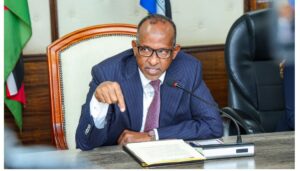Kenya fails to trace deposits of oil and gas in the disputed area claimed by Somalia
Kenya has failed to strike oil and gas deposits in the coastal strip that has been at the centre of an international border dispute with Somalia.
Seismic surveys at the Mlima-1 well in the Lamu Basin’s Block L11B indicated that the wells were dry, putting an end to a 10-year search for oil in the shoreline that had become one of the hottest exploration prospects in the world.
The project was abandoned before the middle of this year, according to the Energy and Petroleum Regulatory Authority (EPRA), since ENI Kenya Business Venture (BV), previously Agip, was unable to identify any oil and gas resources in the region.
EPRA granted Eni the exploration permit in 2012 amid protests from Somalia’s government that Kenya was offering the blocks illegally.
Kenya stepped up exploration activities in the Lamu Basin in December last year, weeks after rejecting a UN court ruling that decided mostly in favour of Somalia in the maritime row.
“There was promising activity but unfortunately, they (ENI) hit a dry well and they had to close the operations,’’ EPRA said.
The Lamu Basin has been mapped for oil and gas resources by ENI since April of last year, notwithstanding the dispute with Somalia over the 100,000 square kilometers-long coastal stretch.
The basin stretches from the Kenya-Somalia border to the boundary with Tanzania and the government was banking on its vastness to secure Kenya’s oil production wells.
A diplomatic dispute with Somalia erupted over the start of the explorations when Mogadishu claimed Nairobi was infringing on its natural riches.
In August 2014, Somalia filed a complaint with the International Court of Justice (ICJ) against the strip that is thought to have mineral, oil, and gas deposits.
Kenya accused Somalia of auctioning exploration rights in the disputed maritime territory in the Indian Ocean, with Nairobi even recalling its ambassador to Mogadishu two years ago.
In 2016, Nairobi wrote to the UN asking for permission and expertise to map out its territorial waters so that it could access the enormous oil, gas, and mineral resources thought to lurk beneath the Indian Ocean sea bed.
The UN court ruled mostly in favour of Somalia in October last year, triggering a protest from Nairobi, with the government saying that it wouldn’t cede an inch of the disputed region.
Kenya had charged the UN-supported court with bias, demonstrating its determination to retain the coastal strip.
After a longer-than-expected delay in commercializing the South Lokichar venture, the Kenyan government was counting on the wells in the Lamu Basin to propel it into an oil-producing nation.
Kenya now has three exploration basins: Tertiary Rift Basin, Anza, and Mandera, following the failure of the Lamu Basin project.
It also dims Kenya’s oil prospects a year after the country’s commercially extractable oil amount was revised upward from 433 million barrels to 585 million barrels by the British petroleum consultancy firm Gaffney Cline Associates (GCA) in an audit.
Also read,
President Ruto maintains govt won’t subsidize Unga amid high-cost maize
Oil prices to shoot after OPEC cuts production by 2 million barrels per day
Kenya orders 100 electric buses through Electric bus supplier BasiGo
Follow us






